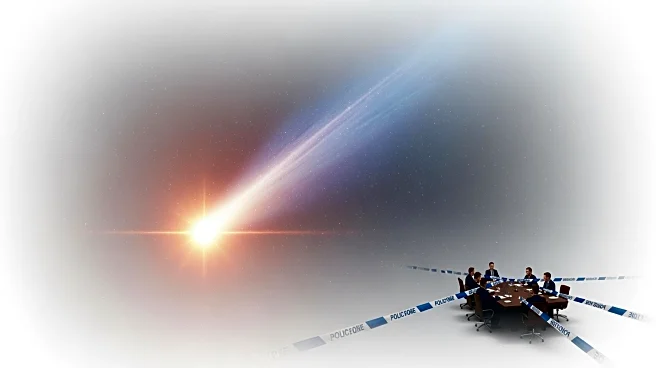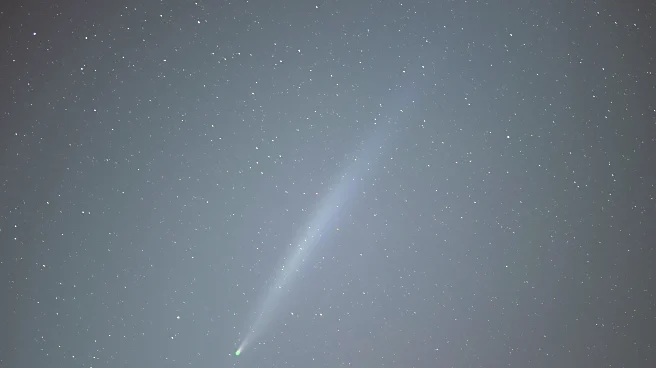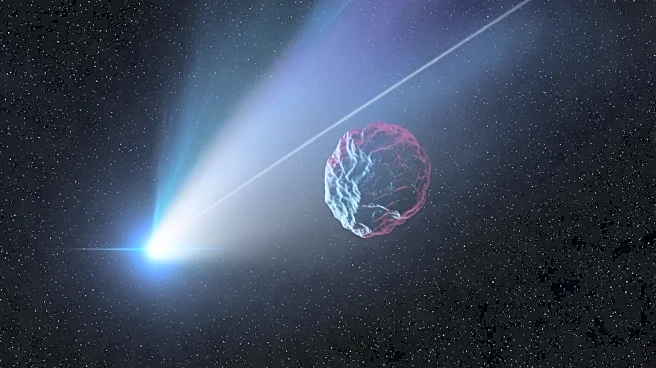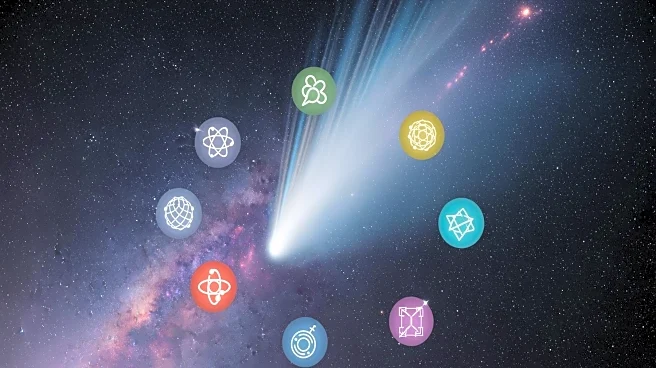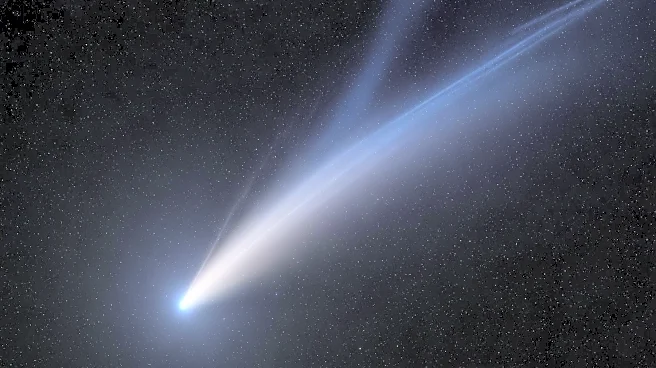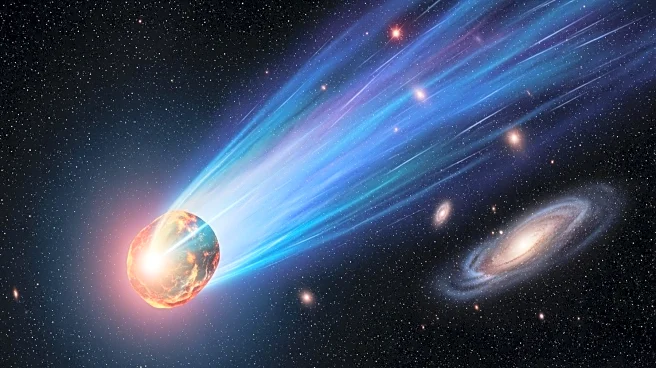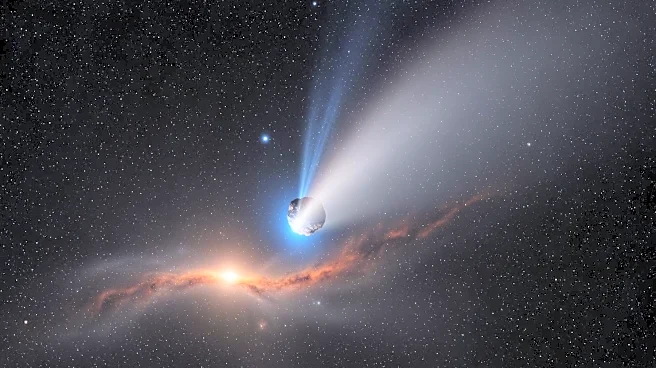What's Happening?
The interstellar comet 3I/ATLAS has captured the attention of scientists and the public due to its unusual behavior as it approaches the Sun. Observations have noted the comet brightening unexpectedly
and performing strange maneuvers, which some speculate could be due to natural outgassing or even extraterrestrial technology. A viral claim suggested that the comet was transmitting a Fibonacci-pattern pulse signal, but experts have debunked this, stating no credible data supports such a transmission. Harvard astrophysicist Avi Loeb has noted the comet's 'non-gravitational acceleration,' which could suggest technological activity, though natural explanations like cometary evaporation are more likely. The comet's blue glow and unpredictable trajectory have added to the intrigue.
Why It's Important?
The behavior of 3I/ATLAS is significant as it challenges current understanding of cometary physics and interstellar objects. The comet's unexpected brightening and maneuvers could provide new insights into the composition and behavior of such celestial bodies. The debunked viral claim highlights the importance of scientific verification in the age of social media, where misinformation can spread rapidly. For the scientific community, this event underscores the need for continued observation and study of interstellar objects, which could have implications for understanding the formation and evolution of the solar system.
What's Next?
Scientists are likely to continue monitoring 3I/ATLAS as it approaches its closest point to the Sun, known as perihelion. Further observations may help determine the causes of its unusual behavior and provide more data on its composition. The scientific community may also use this opportunity to refine models of cometary behavior and interstellar object dynamics. Public interest in such phenomena may lead to increased funding and support for space observation programs.
Beyond the Headlines
The event highlights the broader issue of how scientific information is communicated and perceived in the digital age. The rapid spread of the false signal claim illustrates the challenges scientists face in combating misinformation. This incident may prompt discussions on improving public understanding of scientific processes and the importance of critical thinking when evaluating extraordinary claims.
